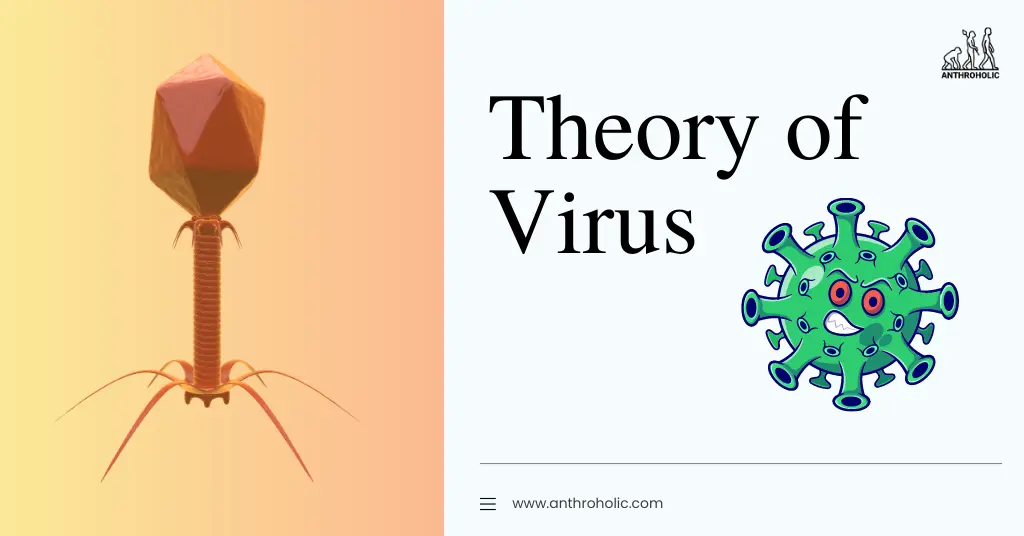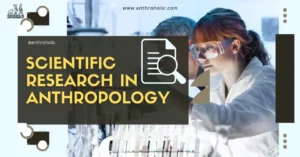AI Answer Evaluation Platform Live Now. Try Free Answer Evaluation Now
Theory of Virus
The Theory of Viruses presents an unconventional yet intriguing perspective on the evolution of life. This perspective posits that viruses, typically seen as parasitic agents, are central to the genesis and development of life.

Historical Context
The origins of the Theory of Viruses trace back to the early twentieth century when scientists started recognizing viruses as unique biological entities [1]. But the actual hypothesis linking viruses to the evolution of life took shape in the latter part of the century.
- 1950s-70s: Scientists began to speculate about viral influences on cellular evolution due to their ability to integrate genetic material into host cells [2].
- 1990s onwards: The theory started receiving mainstream recognition due to advancements in genomics and bioinformatics [3].
Viruses: Entities on the Edge of Life
Viruses, unlike conventional life forms, do not exhibit the typical characteristics of life like growth or metabolism. Yet, they carry genetic material (DNA or RNA) and reproduce by infecting host cells. Their perplexing nature has led scientists to consider them as ‘entities at the edge of life’.
The Central Concepts of the Theory
1. Viruses as Precursors to Life
According to this theory, RNA viruses might have been among the first life forms to emerge on Earth. This idea links to the “RNA World” hypothesis, suggesting that the first replicating entities were RNA-based. Viruses’ simplicity and the existence of RNA viruses lend credence to this concept.
2. Viruses as Drivers of Evolution
The theory postulates that viruses played a crucial role in promoting biodiversity by:
- Facilitating Horizontal Gene Transfer (HGT): Viruses can transport genes between species, leading to the creation of novel genetic combinations.
- Promoting Co-evolution: The constant “arms race” between viruses and their hosts drives evolution, with each party evolving to outsmart the other.
Viruses and the Evolution of Complex Life
The theory proposes that viruses could have contributed to the development of complex life (Eukaryotes) by:
- Promoting Symbiosis: Viruses might have facilitated the fusion of two simple cells to form a more complex cell, a process known as endosymbiosis. This has been hypothesized for the evolution of mitochondria and chloroplasts in eukaryotic cells.
- Enhancing Complexity: Viruses can introduce new functions into host cells, thus increasing their complexity. For instance, the introduction of retroviruses into the germ line cells has led to the evolution of placental mammals.
| Evolutionary Milestones | Possible Viral Influence |
|---|---|
| Emergence of First Life Forms | RNA viruses as first life forms |
| Development of Biodiversity | Horizontal gene transfer and co-evolution |
| Evolution of Complex Life (Eukaryotes) | Symbiosis and enhancement of complexity |
Limitations and Controversies
The Theory of Viruses is not without controversies. Criticisms mainly stem from:
- The difficulty in proving the RNA World hypothesis due to the lack of fossil records of early viruses.
- The complexity of viral life cycles suggesting they may have evolved after cellular life.
Conclusion
The Theory of Viruses presents a thought-provoking perspective on the evolution of life. Despite its limitations and controversies, it underscores the profound impact viruses may have had on our biological world.
References
[1] Lwoff, A. (1957). The Concept of Virus. Journal of General Microbiology, 17(2), 239-253.
[2] Temin, H.M. (1971). RNA-directed DNA synthesis and RNA tumor viruses. Advances in Virus Research, 17, 129-186.
[3] Forterre, P. (2006). Three RNA cells for ribosomal lineages and three DNA viruses to replicate their genomes: A hypothesis for the origin of cellular domain. Proceedings of the National Academy of Sciences, 103(10), 3669–3674.




